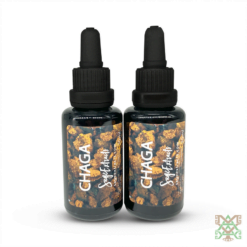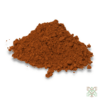-
×
 Chaga (Inonotus obliquus) - Sage Extracts - 30ml 2 ×
Chaga (Inonotus obliquus) - Sage Extracts - 30ml 2 ×€ 36,00€ 18,00You're getting this discount: 50% off
Subtotaal: € 36,00
 Chaga (Inonotus obliquus) - Sage Extracts - 30ml
Chaga (Inonotus obliquus) - Sage Extracts - 30ml Subtotaal: € 36,00
Desde € 3,85 Incl. VAT
Botanical name: Theobroma cacao
Common name: Cacao
Plant part: Seed
Form: Powdered
Country: Ghana
Raw Cacao, Organic, Beans, Powder, from Ghana
Theobroma cacao seeds are dried, roasted, and processed to form Cacao, the basic ingredient in Chocolate and Chocolate products. It is a natural product made from the cacao bean. It is often substituted for coffee (Coffea arabica) or a drink at meals when boiled in milk or milk and water.
Cocoa contains certain chemicals and sensory properties that attract some people. Cocoa contains theobromine (a chemical related to caffeine). The sugar in chocolate releases serotonin (a brain chemical associated with a positive sense of well-being). The smooth, rich taste of chocolate provides sensory pleasure to the taste buds.
Females are the biggest fans of Cocoa, with sensory preference being the prime motivator. Appreciation for Chocolate is significantly associated with preference for sweet products and white Chocolate. It is believed that this taste may come from innate or acquired liking towards the sweetness, feel and smell of Cocoa, while it could also be related to a person’s condition (like their state of mind and hormone levels) influencing post-ingestion effects. From correlations, there appears to be hardly any link between cravings for Chocolate or its pharmaceutical effects and one’s fondness for it.
However, the role of the “Chocolate amphetamine” is disputed. Most if not all phenylethylamine derived from chocolate is metabolized before it reaches the brain.
A cocoa tree was considered a gift from the Gods by the Aztecs, Mayas and Toltecs. Linnaeus named it Theobroma, which means “Cocoa, food of the Gods”. Cacao is derived from Olmec and the subsequent Mayan languages (Kakaw). Cacahuatl, the chocolate-related word, is Nahuatl (Aztec language), which means bitter water.
The Aztecs viewed cacao beans as a valuable commodity, worth more than buying a slave in some cases. They believed that ingesting chocolate conferred wisdom and vitality, so it was reserved for warriors, nobility and priests. Emperor Montezuma allegedly drank 50 cups of the sacred brew daily, crafted from the beans with stimulant and restorative properties. This frothy beverage was also used in religious ceremonies by Xochiquetzal, the goddess of fertility. Their taxation system even included Cacao beans – 100 would obtain you a slave, while 12 sufficed to purchase the services of a courtesan.
Legend has it that Montezuma II was the first to discover a unique type of chilled chocolate froth. The Aztec Emperor regularly enjoyed a steaming cup of the highly coveted “Cacahuatl” beverage; composed of water and Cacao seeds, so valuable they were used as currency. According to Montezuma II, the divine drink not only built up resistance but could sustain one for an entire day without food. This luxury was reserved solely for royalty, due to its exorbitant cost.
Theobroma cacao, King’s American Dispensatory
The Chocolate Tree, Ethnobotanical Leaflets
Nutritional Value Per 100g: Energy 1465KJ / 352kcal; Protein 27g; Fat 11g; Of which saturated fat 6,7g; Carbohydrates 21g; Of which sugars 0,6g; Fibre 31g; Sodium and/or Salt <0,1g
Allergen Statement: We hereby certify that Cacao powder we sell does not contain any substances causing allergies or intolerances as ingredients or by possibility of cross contamination. The list of allergens which are likely to cause adverse reactions in susceptible individuals is provided in Annex IIIa of Directive 2007/68/EC. Please note that this statement is based on the information provided by the manufacturer of the product.
.
Only logged in customers who have purchased this product may leave a review.
Superfoods
Superfoods
 Desde
Desde
Reviews
There are no reviews yet.